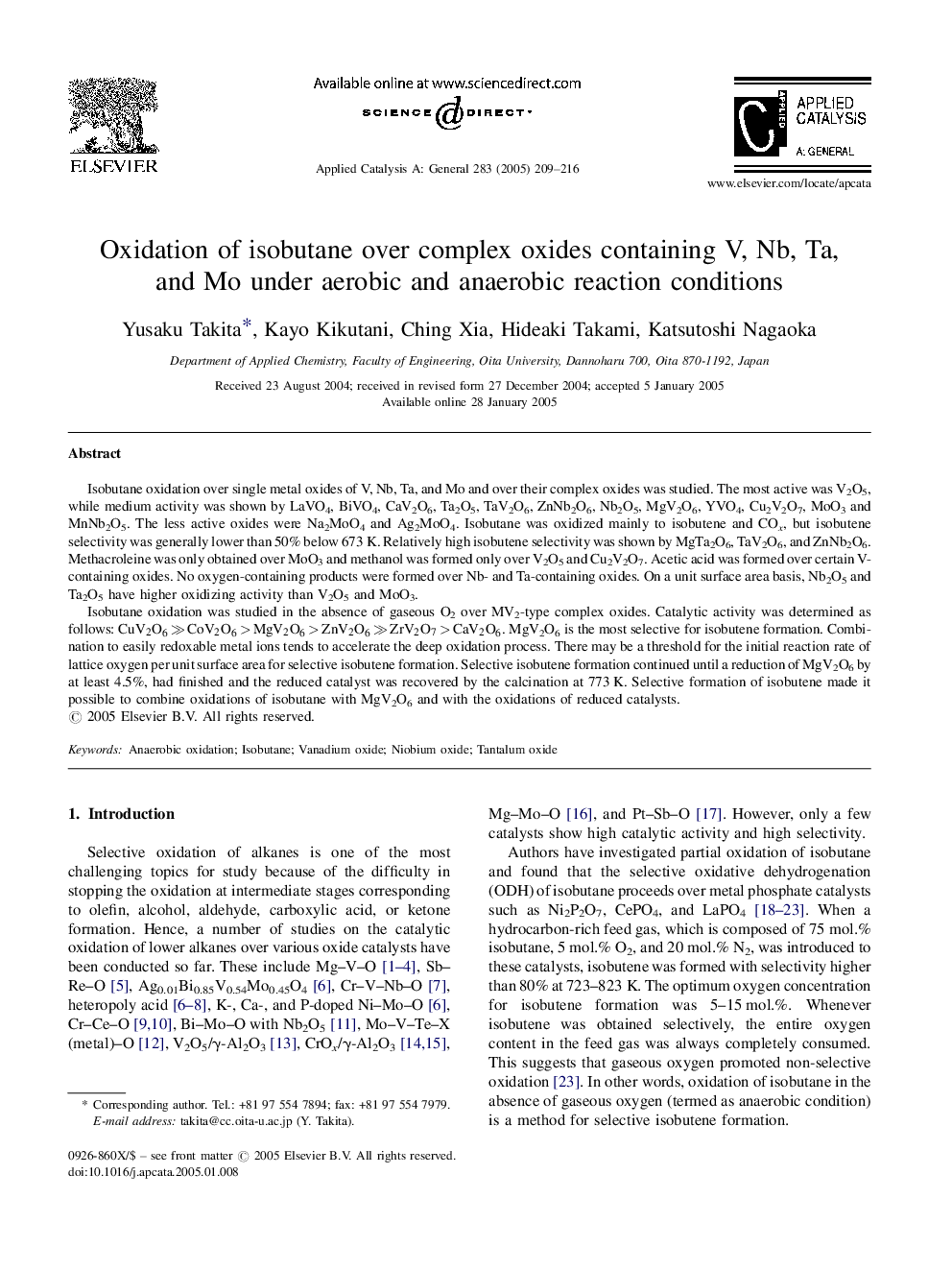| Article ID | Journal | Published Year | Pages | File Type |
|---|---|---|---|---|
| 9608021 | Applied Catalysis A: General | 2005 | 8 Pages |
Abstract
Isobutane oxidation was studied in the absence of gaseous O2 over MV2-type complex oxides. Catalytic activity was determined as follows: CuV2O6â«CoV2O6>MgV2O6>ZnV2O6â«ZrV2O7>CaV2O6. MgV2O6 is the most selective for isobutene formation. Combination to easily redoxable metal ions tends to accelerate the deep oxidation process. There may be a threshold for the initial reaction rate of lattice oxygen per unit surface area for selective isobutene formation. Selective isobutene formation continued until a reduction of MgV2O6 by at least 4.5%, had finished and the reduced catalyst was recovered by the calcination at 773Â K. Selective formation of isobutene made it possible to combine oxidations of isobutane with MgV2O6 and with the oxidations of reduced catalysts.
Related Topics
Physical Sciences and Engineering
Chemical Engineering
Catalysis
Authors
Yusaku Takita, Kayo Kikutani, Ching Xia, Hideaki Takami, Katsutoshi Nagaoka,
